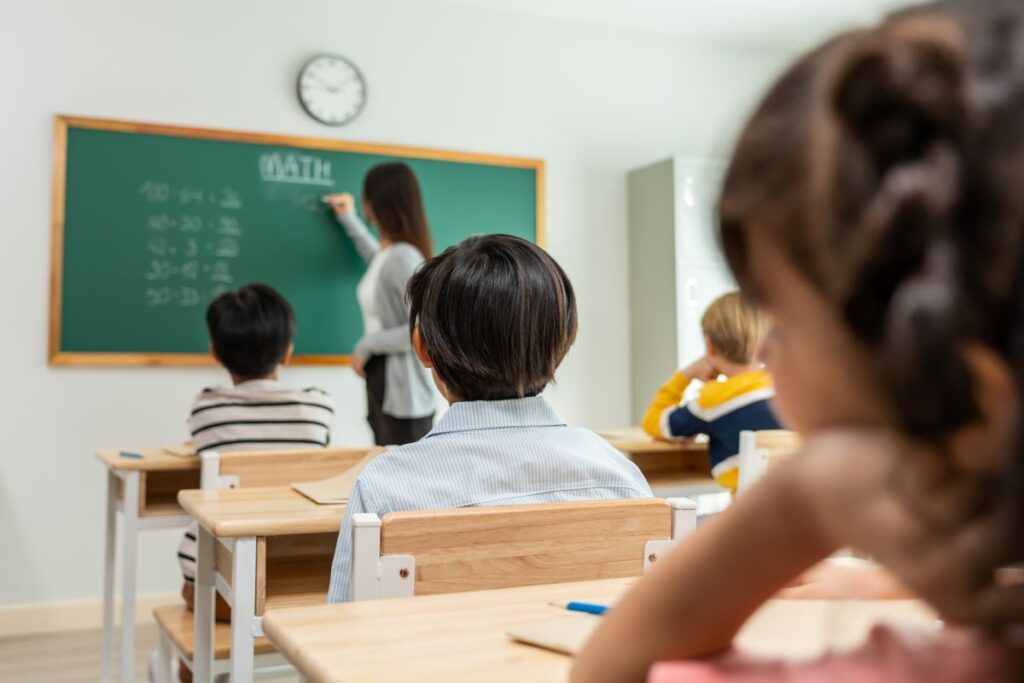As teachers, we have so much more to do than teach reading, writing, math, etc. We have to help children grow in other areas that will help them develop lifelong skills to be successful. This is known as the whole-child approach, and the components are broken down below.
Cultivating Curiosity and a Love of Learning
If students are not curious and do not enjoy learning, school is a struggle for them on a daily basis. The best way to captivate students’ hearts is to engage them from the get-go. This has been a focus for our school this year, and we have seen a tremendous increase in students saying that they enjoy school. We do this by talking to kids about their level of engagement during class and having them rank where they are.
We use an engagement continuum, and this opens up a lot of conversation about why students may not be engaged and how we can support them. We also plan high-interest lessons and learning tasks to promote student engagement. We plan fun school events such as asking teacher cadets from our local high school to hold a book club with students and then having a celebration after reading the book. These types of plans take time but are well worth it!
Building Social and Emotional Intelligence
This is done extremely well at the elementary level but is sometimes seen as more of a challenge once students reach middle school. This age and high school are just as critical for social-emotional learning because kids are dealing with things they do not know how to do and have never had to do before. If we can equip them with skills that teach them how to enhance their emotional intelligence, we are arming them with tools to be successful in life.
It is more difficult at those levels because students will often shut down or think it is lame…but we have to embrace it and include it in the daily activities and interactions planned for school. We must not give in to the temptation of eliminating this due to our discomfort level. We have to persevere and show kids that we care about them and their future. Here are a few ways that teachers can foster social-emotional learning in the classroom:
- Start by giving students scenarios and discussing what they would do if they were in that situation—this makes it a little easier to open up conversations because students are not being forced to talk about themselves and it takes some of the pressure off of feeling judged.
- Present students with ways to help them make decisions. You can combine this with problem-solving skills—both topics have many of the same processes and steps. Go through several ways that are effective and then have students work together to problem-solve something academic or real-world. Students can then reflect on the process and write about what part they need more support with.
Some useful and appropriate SEL curriculum resources can help teachers and school counselors find research-based materials to present these topics to students. The most important thing to remember is that we do not have to be perfect; we just have to show that we care. We have to have honest conversations with kids and be vulnerable to share some of our life experiences, so they know they are not the only ones feeling the way they do. We have to teach them that it is okay to fail, but it is not okay to give up. We learn through our failures, and as long as we keep trying, we will keep improving.
Fostering Physical and Mental Well-being
Physical and mental well-being are cornerstones for students to be successful at school. If they are not in a good place physically or mentally, they cannot focus on what they are learning.
Students should be taught mindfulness and strategies to help them when they are feeling anxious, stressed, or inattentive. Some great examples are deep breathing, closing their eyes and going to a peaceful place, taking a time out in a calm down corner, or writing their feelings in a journal.
We also need to support students as they develop their self-awareness. They need strategies to deal with their feelings, whether they are good or bad. It is also important as students get older for them to learn how to recognize how others are feeling. This will help them to navigate how to treat others and how to react to their own feelings around others that might be in a different headspace than them. Knowing all this can eliminate conflict or arguments that might otherwise happen.
Students also need lessons on communicating with others and effective methods of communication. It is important to teach kids when an email is appropriate and when something needs to be a conversation. Role-playing some of these would be a great activity for older students.
Promoting Creativity and Critical Thinking
This can be done through academic tasks, but also through conflict resolution strategies. With academic tasks, I go back to engaging texts, assignments, and projects. There are so many ways for students to be creative and use critical thinking skills when doing their work. There are creative ways for students to demonstrate understanding for their teachers. Some examples from my school are:
- A math project where students had to create a list of family and friends, they wanted to buy Christmas presents for, establishing a budget, and then proving they could buy the things they wanted to buy for those people.
- When learning about shadows and light, creating a shoebox model of Pepper’s Ghost with a scene from A Christmas Carol.
- Have students create a persona as a guest on the Titanic and write from their point of view.
- Researching traditions around the world and creating a way to present the findings to the class.
Teachers can also have whole and small group lessons to teach kids how to solve conflict when something does come up. You can play a conflict resolution game, read a book, role-play, use specific strategies such as a peace path, choice wheel, or how big is my problem.
Developing a Growth Mindset
This is so important, especially as students get older. One way to begin this conversation is by talking to kids about making mistakes. Helping them to understand that everyone does and giving them examples is a great opener. Also, be vulnerable with your students and let them know when you make a mistake. Then, begin making it more applicable, such as with learning intentions and talking with students about what they already know about a standard/skill and what they still need to learn. Remind them that we all learn at different rates and in different ways and continue that conversation by talking about owning a growth mindset. You can also have this conversation after a test or project is graded and how they can grow and improve.
The whole-child approach is an investment in children; it gives them foundational skills for learning and being well rounded, but also provides them with skills they can use for life.
Educators never stop learning; check out our available graduate degree programs to hone your skills and promote lifelong learning and academic excellence.




